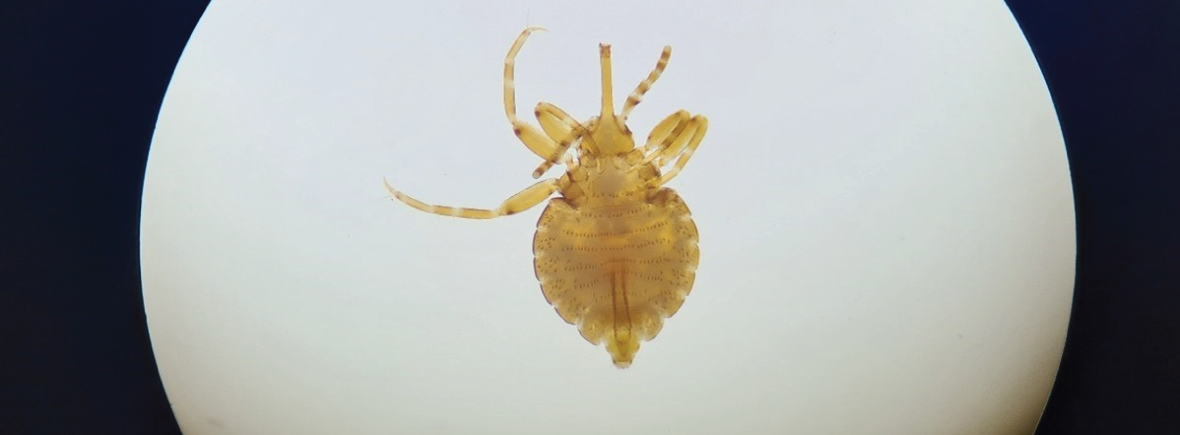Elephant lice (Haematomyzus elephantis) are dark-coloured small-bodied (<10 mm) insects that lives permanently on elephants. An interesting fact is that they look like little elephants, with a long truck-like mouth parts and a round chubby body. Elephant lice belong to a group or suborder of three louse species that occur on mammals with strong skins. Also included in this suborder are warthog lice (Haematomyzus hopkinsi) and Haematomyzus porci, a species that occurs on the red river hog of the forests of central Africa.
Based on morphology, current taxonomic records list a single louse species (H. elephantis) for both African (Loxodonta africana) and Asian elephant (Elephas maximus) species. However, the validity of this is questioned given the fact that the two elephant species are geographically separated and also belong to different genera.
This hypothesis was recently tested in an international collaborative study that made use of freshly obtained louse samples from an African elephant in Mpumalanga. The research team comprise of both local experts, represented by Prof Sonja Matthee (Department of Conservation Ecology and Entomology at Stellenbosch University) and Dr Jeanette Wentzel (Pretoria University) and international colleagues, Prof Lance Durden (Georgia Southern University, USA) and Dr Renfu Shao (University of the Sunshine Coast, Australia).
Because they are so tiny, it’s not the easiest thing in the world to spot lice on an elephant. Another confounding factor is that only some elephants have lice. “We were lucky to get lice on our first attempt” say Prof Matthee, a parasite ecologist. The samples (one adult female and four eggs) were molecularly analysed and compared with previously obtained sequences from Asian elephant lice. Based on extensive analyses it is confirmed that the lice on the two elephant species are molecularly distinct. The difference is so large that the lice can be regarded as genetically different species.
The next step will be to do detailed morphological comparisons to assess if the lice are cryptic species (i.e. morphologically undifferentiated). Additional fresh material is required for this step. In addition, further molecular examination will include sequencing of the genome.
Figure caption:
Figure 1. Louse specimen obtained from an African elephant
(photo credit: S Matthee)

